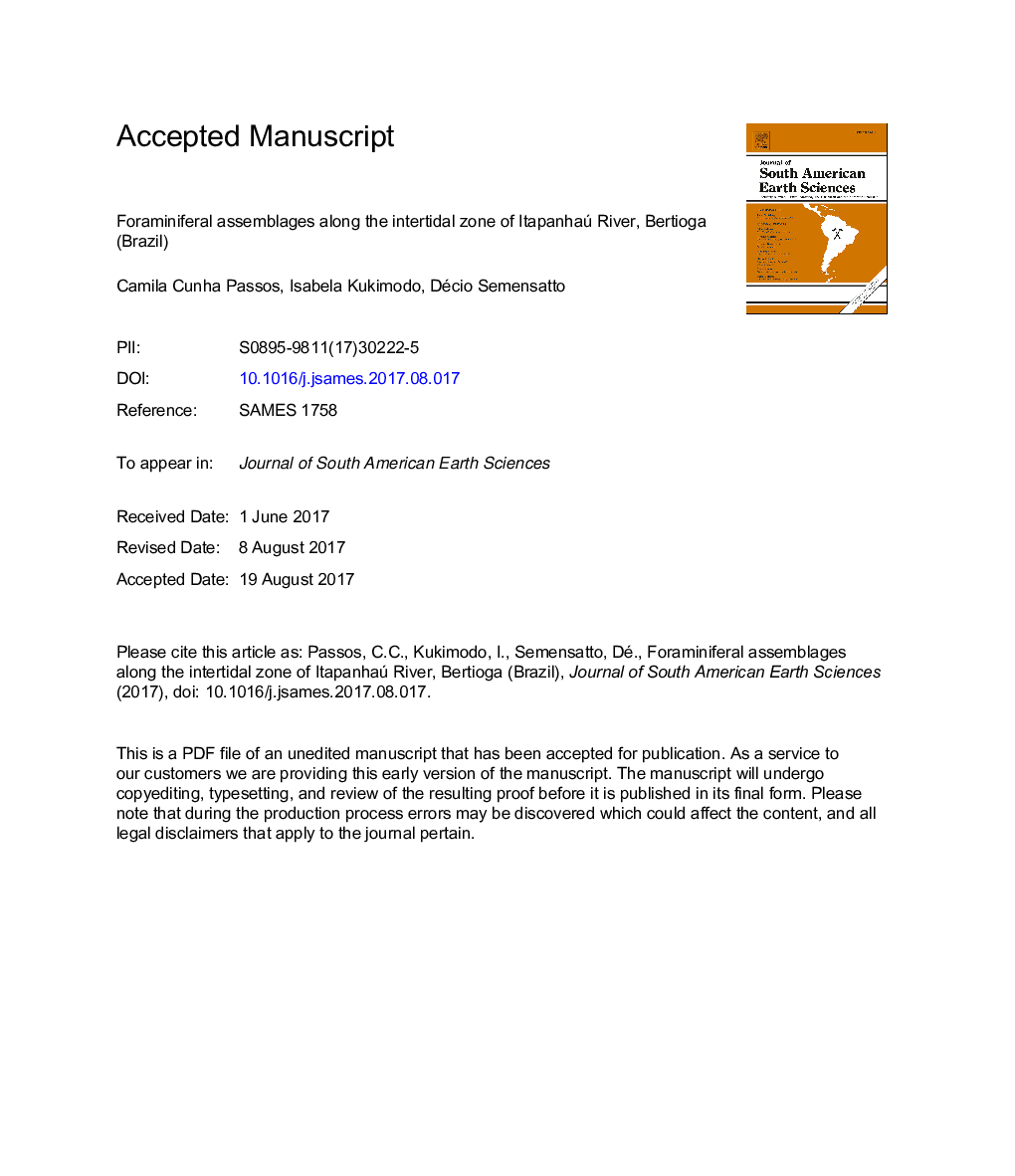| کد مقاله | کد نشریه | سال انتشار | مقاله انگلیسی | نسخه تمام متن |
|---|---|---|---|---|
| 5780407 | 1635131 | 2017 | 37 صفحه PDF | دانلود رایگان |
عنوان انگلیسی مقاله ISI
Foraminiferal assemblages along the intertidal zone of Itapanhaú River, Bertioga (Brazil)
ترجمه فارسی عنوان
مجموعه های فرامینی فلفل در امتداد منطقه ی بین رودخانه ایتپانا آئو، برتیگا (برزیل)
دانلود مقاله + سفارش ترجمه
دانلود مقاله ISI انگلیسی
رایگان برای ایرانیان
کلمات کلیدی
موضوعات مرتبط
مهندسی و علوم پایه
علوم زمین و سیارات
علوم زمین و سیاره ای (عمومی)
چکیده انگلیسی
Foraminifera found in intertidal zones have been successfully used in studies examining relative sea level monitoring around the world. For this purpose, it is necessary to establish the typical foraminiferal assemblages of different salinity regimes and sediment sub aerial exposition. In the present work we collected 27 sediment samples from 5 transversal transects in the mangroves of the Itapanhaú River (Bertioga, SP, Brazil). Transects were distributed along salinity and altitudinal gradients in order to study the community structure of recent foraminifera in terms of diversity and species composition. We identified 35 species and described 5 groups of species in different environmental settings, from downstream to upstream and from margin to landward in the mangrove forest, associated with salinity regime and sediment proportional exposure time. These variables seem to primarily control species distribution and community structure in the intertidal zone, although dissolution of calcareous taxa cannot be ruled out. The first group is dominated by Ammonia spp. and Elphidium spp., colonizes the mouth of the river on an unvegetated tidal flat in the lowest portion of the intertidal zone, under a polyhaline regime. This group exhibits the smallest sub aerial exposition (19,3%) as well as comparatively high species diversity. The second group is formed by a sample dominated by Trochammina inflata and Arenoparrella mexicana, obtained in a polyhaline area on the margin of the mangrove. The third group is dominated by Miliammina fusca and Ammotium spp., and colonizes mesohaline mangrove forests, with proportional exposure time of between 50 and 75%, and high species diversity. The fourth group comprises communities dominated by M. fusca and T. inflata, and colonizes the intermediate level in the interior of the mangrove forest, exhibiting high species diversity. The fifth group comprises communities broadly dominated by M. fusca, colonizing oligohaline margins and the highest level of polyhaline mangrove forests. This group exhibits the greatest sub aerial exposition and lowest species diversity of all five groups. Hence, these foraminifera groups may serve as a reference with which to interpret drilling core layers and reconstruct relative sea levels in other similar estuarine systems.
ناشر
Database: Elsevier - ScienceDirect (ساینس دایرکت)
Journal: Journal of South American Earth Sciences - Volume 79, November 2017, Pages 297-306
Journal: Journal of South American Earth Sciences - Volume 79, November 2017, Pages 297-306
نویسندگان
Camila Cunha Passos, Isabela Kukimodo, Décio Semensatto,
